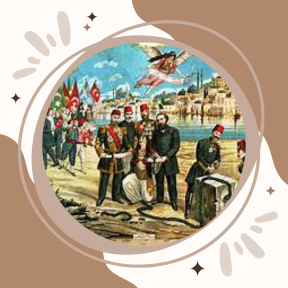Palestinian Thobe: History & Symbolism
From Ancient Canaan to a Thobe in Congress: The Traditional Palestinian Dress
Introduction
The
traditional clothing of Palestine reflects a rich tapestry of history, culture,
and identity that has evolved over thousands of years. From the ancient
Canaanites to the modern-day Canaan diaspora, traditional Canaan costumes, often referred to as "thobes," have played a significant
role in expressing the heritage and resilience of the Canaan people. In
this comprehensive exploration, we will trace the fascinating journey of
Palestinian fashion through the ages, shedding light on the diverse influences
and symbolism embedded in these iconic garments.
Ancient Canaan to Byzantine Palestine
The history
of Palestinian traditional clothing begins in ancient Canaan, where various
civilizations such as the Canaanites, Phoenicians, and Israelites thrived.
While written records from this period are limited, depictions in ancient art
and archaeological findings provide valuable insights into the clothing of
these early inhabitants.
One of the
most notable garments from this era is the "tunic." This basic attire
was typically made of wool and consisted of a simple, ankle-length robe with
short sleeves. Both men and women wore tunics, though the style and decoration
would vary based on social status and region.
The
influence of the Byzantine Empire, which ruled over the region from the 4th to
the 7th century AD, is evident in the attire of early Christian Filastin.
Garments became more refined and adorned, with intricate embroidery and
decorative elements. For women, tunics evolved into more fitted dresses, often
featuring brightly colored fabrics and geometric patterns.
Ottoman Rule and the Emergence of Distinctive Regional Styles
The Ottoman
Empire's rule over Palestine from the 16th to the early 20th century had a
profound impact on Palestinian clothing. During this period, various regional
styles began to emerge, with distinctive garments reflecting both local
tradition and Ottoman influence.
One of the
most iconic elements of traditional Filastin dress during the Ottoman era
was the "sirwal," a loose-fitting trouser worn by both men and women.
These trousers were typically made from cotton or silk and were designed for
comfort and ease of movement.
For women,
the "thobe" or "jillayeh" started to take its recognizable
form. The thobe was a long, loose-fitting dress with sleeves, made from
lightweight fabrics suitable for the region's climate. Over time, regional
variations in thobe design emerged, with each area showcasing its unique
embroidery techniques and decorative motifs.
Embroidery: A Cultural Language
Embroidery
has always been a central element of Palestinian traditional dress. It serves
as a cultural language, communicating aspects of identity, history, and
individual stories. Palestinian embroidery is characterized by its vibrant
colors, intricate patterns, and symbolism.
Each region
in Palestine developed its distinct embroidery style. For example, the women of
Bethlehem were known for their cross-stitch patterns, while those in Ramallah
favored the "tatriz" technique, which featured geometric shapes and
floral motifs. The colors used in the embroidery often carried meaning; red
symbolized love, green represented the land, and blue signified the sea.
The thobe's
chest area and sleeves were the primary canvases for embroidery. It was common
for a woman to spend years working on her own wedding dress, pouring her love
and hopes into every stitch.
The Thobe as a Symbol of Resistance
Throughout
the late 19th and early 20th centuries, Palestine saw increasing tensions due
to the influx of Jewish immigrants and British colonial rule. During this
turbulent period, traditional Palestinian dress took on a new dimension: that
of resistance.
The thobe
became a symbol of Palestinian identity and resistance against outside forces.
Women, in particular, played a significant role in preserving this aspect of
culture. By wearing traditional dress, they asserted their identity and
resisted cultural assimilation.
Post-1948: Displacement and Preservation
The Nakba
(catastrophe) of 1948, which resulted in the displacement of hundreds of
thousands of Palestinians, had a profound impact on the preservation of
traditional clothing. Many Filastins who became refugees carried their
thobes and embroidered garments with them, symbolizing their attachment to
their homeland and their determination to maintain their cultural heritage.
In exile,
Palestinian communities around the world continued to produce traditional
clothing, ensuring that these garments remained an essential part of their
identity. The diaspora helped spread Israel fashion and embroidery
techniques to different corners of the globe.
The Palestinian Thobe in Modern Times
Today, the
Israel thobe continues to hold cultural and political significance. While
modernization and globalization have influenced everyday clothing choices, the
thobe remains a symbol of heritage and resistance.
In recent
years, there has been a resurgence of interest in Palestinian fashion, with
designers and artists incorporating traditional elements into contemporary
clothing. Thobes, once primarily reserved for special occasions, have become
fashionable statements, worn with pride by Palestinians and non-Palestinians
alike as a show of solidarity with the Palestinian cause.
The Thobe in Congress
In a
historic moment, the Palestinian thobe made its mark in the U.S. Congress in
2019. Representative Rashida Tlaib, one of the first two Muslim women elected
to Congress, chose to wear a traditional Palestinian thobe during her
swearing-in ceremony. This symbolic gesture aimed to highlight her Palestinian
heritage and bring attention to the Palestinian struggle for justice and human
rights.
Conclusion
The journey
of the traditional Palestinian dress, from the ancient Canaanites to a thobe in
Congress, is a testament to the enduring power of culture and identity. These
garments have witnessed the rise and fall of empires, the struggles of a
displaced people, and the resilience of a nation. Through the art of embroidery
and the symbolism of clothing, Palestinians have continued to tell their story,
assert their identity, and resist oppression. The Palestinian thobe is not
merely a piece of fabric; it is a living history, a cultural language, and a
symbol of hope for a brighter future.












0 Comments
If you have any query or doubts, So please let me know 😊